Vila Bela da Santíssima Trindade
Vila Bela da Santíssima Trindade is located near the border with Bolivia, about 540km from Cuiabá, and 300km from Cáceres. Even though its still out of the way today, Vila Bela is well worth the effort to visit. Aside from its historical sites, the town is a preserve of ancient African customs (some of which no longer exist in Africa).
The town is close to the Pantanal, but its local environment is a mixture of Amazonian rainforest and Catinga (high grasslands). There are high rocky outcrops and picturesque waterfalls. Moreover, the Guaporé River, which flows through the town, is the only place in the region where you can see pink Amazon river dolphin (boto), as well as smaller grey river dolphins (tucuxi or boto-cinza).
Be warned, however, that the town remains under-developed without much tourist infrastructure - meaning that visits are better suited more adventurous of travellers with some basic Portuguese to negotiate accommodation and tours locally.
Historically it was gold that first triggered the exploration and settlement of Mato Grosso. New discoveries and some small mines continue - however, a discovery in the town of Pontes e Lacerda (at the entrance of MT-246 leading to Vila Bela) has triggered a new exodus bringing thousands of illegal prospectors. For many Brazilians, suffering through an economic downturn, the lure of gold is strong - with some calling it the new Serra Pelada. Although the government has declared the mine illegal has has attempted to close it down, its likely this mine will continue in the short term at least.
History
Portuguese colonies grew in the region following the discovery of gold in 1734. Although the territory was technically Spanish at the time, Portuguese expeditions and settlers were more numerous, and were quick to expand their lands ahead of any rival Spanish expeditions. This land grab succeeded with title formally passed to the Portuguese Crown under the Treaty of Madrid in 1750. This was based on the Roman Law principle of Uti possidetis, ita possideatis (who owns by fact owns by right). The heavily forested landscape of the Guaporé river valley is what gave the state of Mato Grosso (thick forest) it's name.
The town began as a trading post called Pouso Alegre, in 1737. The official founding as Vila Bela da Santíssima Trindade occurred in 1752. The old town was dominated by the Matriz, a type of colonial church or small cathedral, constructed early in the town's history (sources dating this vary between 1752 and 1793), the ruins of which remain as the town's major landmark. The other major building of the time was the Palácio dos Capitães Generais, which has recently been restored as the town's municipal government building. Although the town was initially established was the regional capital, its remoteness, and the lack of a practical river route from the coast made it an extremely long and difficult journey - and somewhat impractical to service. This, combined with the end of the gold deposits, lead to the decision to move the capital in 1835. With this move, most of the town's landowners and business people followed - leaving their slaves behind to run their properties and businesses. As such, Vila Bela remained forgotten and isolated for a further century.
The town's almost exclusively African population saw its status change to a Quilombo.
Also of note in the town's history is its connection with the early 20th Century English explorer, Colonel Fawcett. The town served as a base for several expeditions starting in 1908 to map the Rio Verde. It was subsequently visited by other explorers such as George Dyott and Candido Rondon.
African Culture
Quilombo is the name given to African villages in Brazil, which typically originated as refuges for runaway slaves hidden in remote territory far away from the big sugar plantations - including in the Amazon rainforest. The most famous of these was the African Kingdom of Palmares in Brazil's northeast. A few quilombos still exist as separate communities, preserving some African culture and customs which are now extinct in Africa.
Vila Bela is a time capsule of old African culture. The Dança do Congo represents an ancient story of two competing African kingdoms. Photo: Cultura/Assessoria.
Vila Bela is noted for two traditions: Dança do Congo and Dança do Chorado - both of which are part of the town's Festança da Vila Bela festival every July.
The Dança do Congo represents the struggle between the King of the Congo and another neighbouring kingdom. This other kingdom sends an ambassador to the King of the Congo, offering the hand of marriage for the other King's daughter. The King of the Congo rejects this offer, fearing that it is a plot and that, after the marriage, he will be killed (along with the Prince and his Secretary of War) and that his kingdom will be stolen. After the refusal of marriage, the ambassador to the other king declares war.
The dance, itself, contains the characters of the King, the Prince, the Secretary of War, the Ambassador, and the soldiers dressed in their robes and uniforms. They carry swords and are richly decorated. St Benedict is also represented. The dance involves the actions of the soldiers in order to protect the King and his cabinet from the invaders.
The Dança do Chorado originates from the period of colonial Brazil, when runaway slaves and other offenders would be punished by their masters. The dance was something performed by the accused's loved ones asking for forgiveness. However, over time, the dance became a tradition near the end of the St Benedict festival where the women in the pitch would balance bottle on their head and dance to prove they'd remained sober despite the festivities.
Dança do Chorado, dates from Brazil's colonial period. It was used by slaves as a means to ask for mercy for loved ones, but the fact that it involves balancing a bottle on one's head also led to it being used as a sobriety test. Photo: José Medeiros/Agência Phocus.
Local Delicacies
Canjinjin is a local delicacy - being an alcoholic drink based on cachaça mixed with ginger, cinnamon, cloves and honey. It's said by some to have therapeutic properties, by others that its an aphrodisiac, and by others that it cures the common cold, fevers, and even chases away bad weather. We get the point - basically they just like drinking it and any excuse is good. The drink is prepared only by women, and its exact recipe remains a highly guarded secret.
View of Vila Bela da Santíssima Trindade's iconic Igreja Matriz ruin. This is how it looked prior to the weather cover being erected in 2006. Photo: José Medeiros/Agência Phocus.
Not quite as photogenic since the weather cover was installed - but this is intended to halt further destruction of the ruin in heavy downpours. Photo: Edson Rodrigues/Secom-MT.
Things to See and Do
The best time to visit Vila Bela is mid-July when it holds its annual festival - and which is the perfect opportunity to see the town's culture on display. The other attractions below are available year round.
Igreja Matriz (Church Ruins):
The most obvious attraction within the township are the ruins of the old Matriz (a type of colonial church, or small cathedral). With the abandonment of the capital, this fell into disrepair, with the region's heavy rains eating at the adobe brickwork until the structure became little more than a ruin. A cover was erected to protect the ruin in 2006 - although this, too, is already is a less than ideal state.
Located at corner of Rua Travessa do Palacio and Rua Conde de Azanbuja.
Next to the ruin is a small museum displaying artefacts from Vila Bela's history as well as some of the original wooden sculptures from the Matriz, including that of St Benedict, the patron saint of the town. This is open Mon-Sat: 8-11am / 2-5pm.
Sites around Vila Bela are valuable locations for archaeologists researching Brazil's colonial history and expansion. Photo: Guilherme Filho/Secom-MT.
Palácio dos Capitães Generais:
This is the original Governor's palace for the Mato Grosso territory - constructed in the mid 18th century when Vila Bela was remotest outpost of the Portuguese Empire - taking about six months to reach in a perilous overland journey from São Paulo. Located in the centre of the town, this building has recently been restored.
Located at corner of Rua Travessa do Palacio and Rua Conde de Azanbuja.
Centro de Comercialização de Produtos Artezanais:
This bright yellow colonial style building with arched doorways serves as an exhibition centre and shop for artists and crafts people from around the Guaporé region - along with other souvenirs. You can also purchase local sweets and delicacies such as papaya jam and Canjinjin. It's a cooperative passing the profits back to producers.
Located in Rua Londrina, close to the Igreja Matriz.
Vila Bela's Centro de Comercialização de Produtos Artezanais is a great place to explore local crafts and sample delicacies. Photo: Edson Rodrigues/Secom-MT.
River Tours:
The Guaporé River, which runs through the town, is home to pink river dolphins (boto), grey river dolphins (tucuxi), plus and the large pintado or cachara catfish favoured by Brazil's sports fishermen. Along the riverbanks you'll see otters, capybaras, caiman, monkeys, and a large variety of birds. The best way to enjoy this is via a boat trip which can be arranged locally.
Pink Amazon River dolphins (Inia geoffrensis), locally known as boto, can sometimes be seen in the Rio Guaporé. Photo: Shutterstock/guentermanaus.
Waterfalls:
Town is situated near the edge of the Brazilian central highland (or planalto) where the land drops into the Paraguay River basin. The Guaporé River also connects via the Madeira into the Amazon river basin.
Within this landscape, there are several picturesque waterfalls which are favoured by locals and tourism for swimming and picnics. The Cascata dos Namorados (Lovers' Waterfall) is over 70m high and is located 14km away by car, with another 2km hike along an easy forest trail. There's a small crystal clear lake at the foot of the falls for swimming - and its even possible to trek into the rocks behind the curtain of water for an unusual view. Close by is another waterfall, called Cachoeirinha (little waterfall) which is 46m high.
Cascata do Jatobá is the highest waterfall in Mato Grosso, at around 250m, but is more difficult to reach. Getting there requires a guide and a tough trek through the cerrado and forest. The surrounding forest is also home to a variety of exotic birds including red and green macaws.
National Parks:
Vila Bela also provides a convenient launching point into nearby natural areas, the Serra do Ricardo Franco State Park, on the Mato Grosso side of the frontier, and Noel Kempff Mercado National Park in Bolivia. Both of these cover an area known as the Huanchaca Plateau - which is an area of high tablelands where the dry cerrado mets the Amazon rainforest. As a result, the area has very high biodiversity. There are several more large waterfalls in the park including the 100m Cascata dos Macacos (Monkey Waterfall) and Cascata Paradiso.
This area is notable in providing the inspiration for SIr Arthur Conan Doyle's classic adventure story, The Lost World. This was thanks to Colonel Fawcett who explored on an expedition to map the Brazil/Bolivian frontier in 1908. On encountering the high tablelands, Fawcett was captivated - speculating on the strange creatures that might still exist in the prehistoric landscape, which he later described in detail in a presentation to the Royal Geographic Society.
Getting There
By car: Follow highway BR-174 from Cáceres to Pontes e Lacerda, then turn on MT-246. This covers a 300km distance, taking 3.5 to 4 hours.
By bus: Colibri Transporte have a bus leaving Cuiabá each day at 6:30am, travelling Vila Bela. Tickets can be purchased at the local rodoviaria (intercity bus station). Tickets can be booked online via the VerdeTransportes website. If booking online, you may need to book the journey first to Ponte e Lacerda, with a subsequent connection to Vila Bela da Santíssima Trindade
Places to Stay
Name
Description
Pousada Paço das Onças
Along the Rio Guaporé, 120km by dirt road from Vila Bela.
www.pousadapacodasoncas.com.br
Remote lodge in an area with notable fishing and wildlife. Accessible by dirt road, and by small plane.
See Trip Advisor reviews.
Hotel Vila Bela
Avenida São Luiz s/n, Centro
Phone (65) 3259 1084 / 9911 758
No further details or reviews available. This is likely a very basic hotel.
Hotel Cascata
Rua Dr. Mário Correia 750, Centro
Phone (65) 3259 1154
No further details or reviews available. This is likely a very basic hotel.
Hotel Guaporé
Rua Pouso Alegre 607, Centro
Phone: (065) 3259 1030
No further details or reviews available. This is likely a very basic hotel.
Tour Companies
We have no recommended contacts for tour companies in Vila Bela da Santíssima Trindade, as there little tourism infrastructure in the town or published contacts. Tours can be arranged but will need to be negotiated locally.



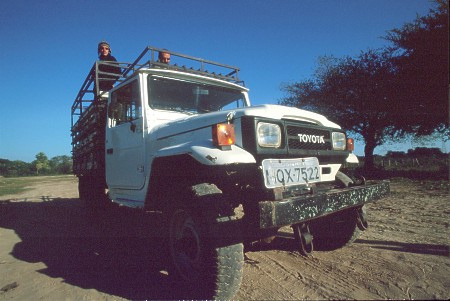
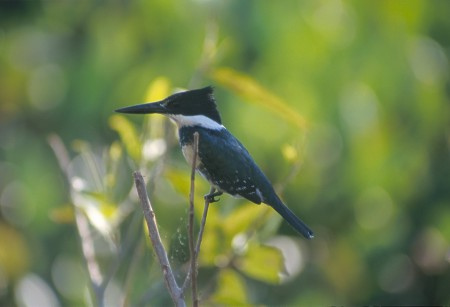
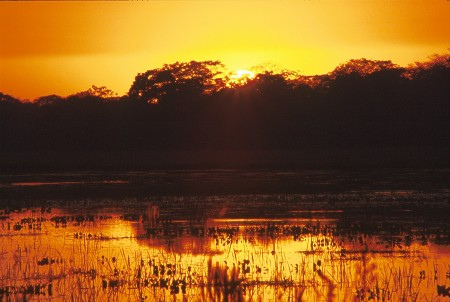


Banner image: Traditional Dança do Chorado in Vila Bela (Cultura/Assessoria)
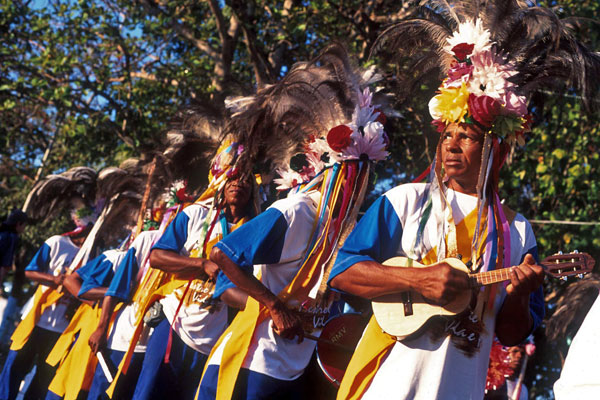
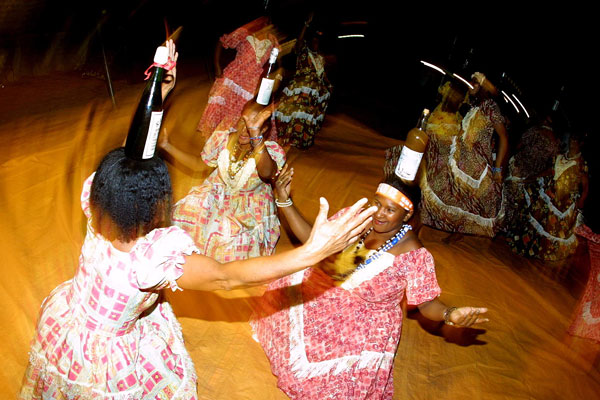
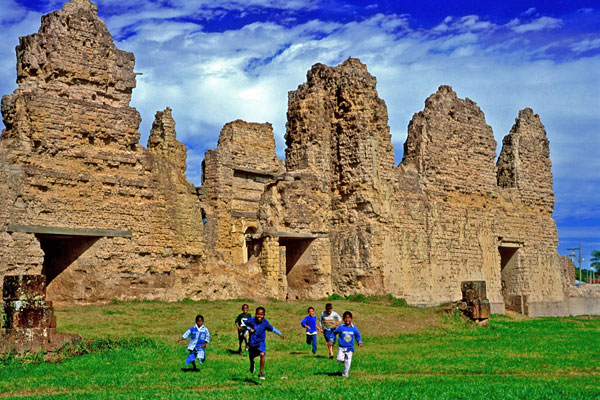
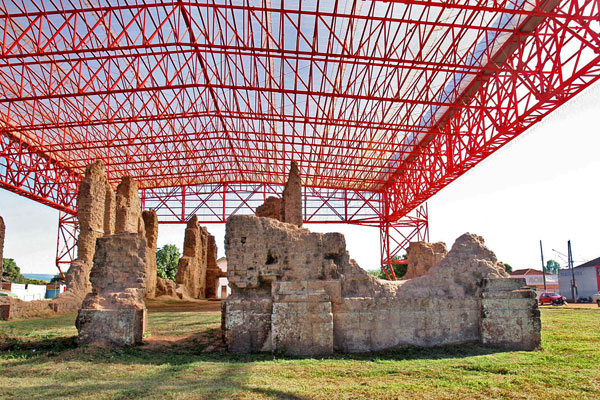
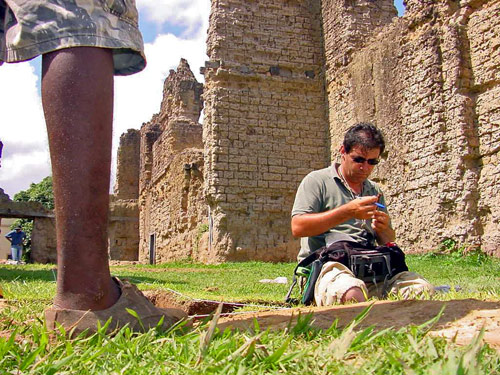
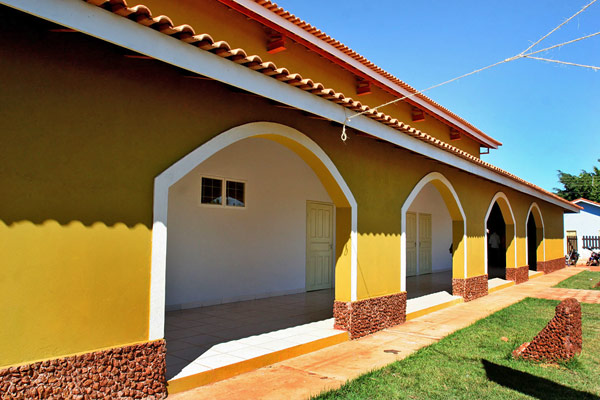
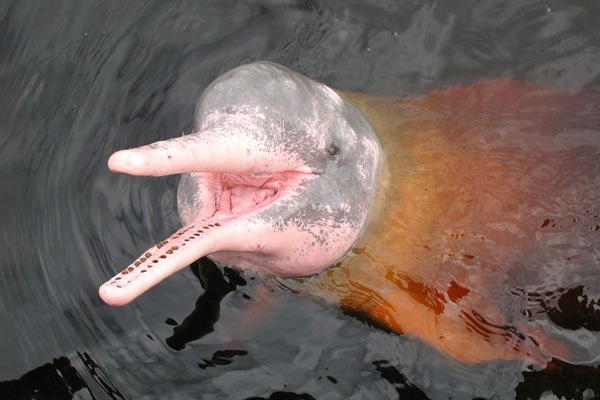
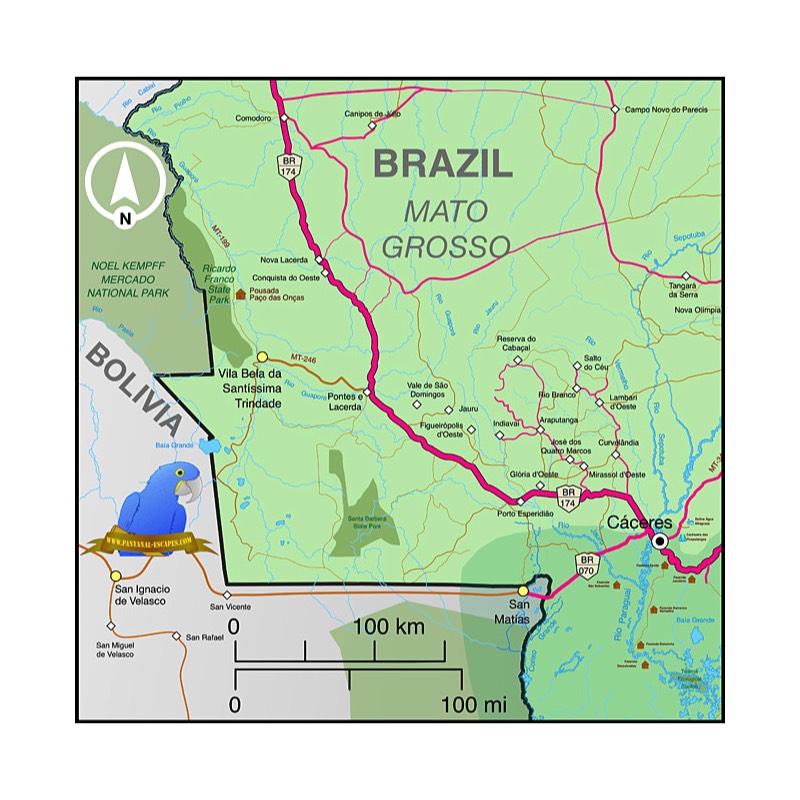
Pantanal Escapes